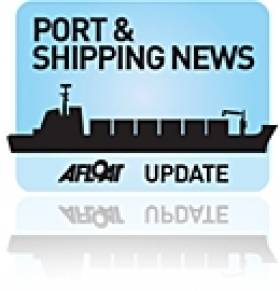Displaying items by tag: Shipping Optimistic
IMDO Shipping Review: Shipping Optimistic Outlook, First Ethane-Fuelled Orders, Irish CEO's Express Confidence and much more
#Ports&Shipping –The latest IMDO Weekly Shipping Market Review includes the following stories as detailed below.
Shipping Industry: Optimistic outlook - A majority of shipping companies expect their turnover and profits to increase during 2014, according to a survey from German shipping lender HSH Nordbank, as reported by Lloyd's List. Of the 51 companies surveyed, 59% reported expectations of increased sales during the current year, with 43% projecting rising profits.
Technology & Innovation: First orders for ethane-fuelled vessels - Three new ethane-powered ships or liquefied ethylene gas carriers (LEGCs) – the first vessels to be powered by ethane – have been ordered by Ocean Yield ASA of Norway, according to Ship & Bunker. Man Diesel, suppliers of the ships' engines, advocates the benefits of ethane as a fuel alternative. They claim ethane is less expensive and requires less bunkering time than heavy fuel oil (HFO).
Irish Economy: CEO confidence rising - A CEO Pulse survey carried out by PwC saw 86% of Irish CEO's expressing their confidence regarding Ireland's economy. The survey was based on the views of 250 CEOs in Ireland and saw an increase of 31% in positivity from CEOs when compared to the same time last year. Despite respondents showing a considerable increase in positive sentiment towards the wider economy and their own businesses, many still reported challenges facing their businesses in the coming years with 86% viewing the increasing tax burden as a major challenge
For more on each of the above and other stories click the PDF downloadable IMDO Weekly Markets Review (Week 30). In addition to coverage on Afloat.ie's dedicated Ports & Shipping News.





























































